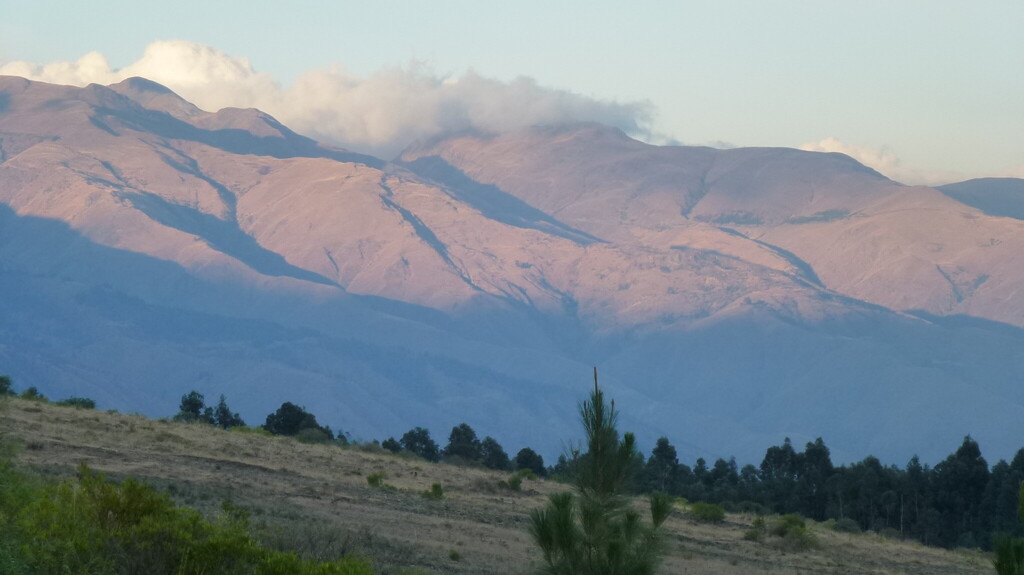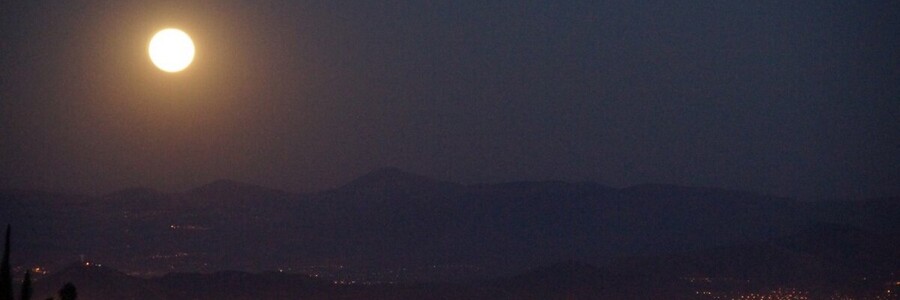Arrived in Cochabamba
The flight was pleasant and on Sunday, 10 August 2014 at 8.15 a.m. - with a six-hour time difference it is now 2.15 p.m. in Germany - I arrive in Cochabamba. Noemi Stadler-Kaulich and her husband Joachim pick me up at the airport.
From the plane I had a wonderful view of the Andes and am amazed: large areas of Bolivia seem deserted and the mountain slopes and valleys are densely forested. Later I learn that we have crossed a national park. The closer we get to the megacity of Cochabamba, the more naked the mountains become, only red earth, scattered small villages and bare rocks can be seen.
We get into the car and drive over bumpy tracks, past low, mostly one-storey houses. Construction is going on in many places, because there are elections in October and the politicians are trying to hand out a few goodies at the end of the day. It's the same everywhere, I think.
At the market we pick up some fresh fruit. We meet many Indians, the women with long plaited braids and colourful skirts. A woman speaks to me in Quechua and smiles, I can only smile back.
The Andes are majestic and bare
About two million people live in the valley of Cochabamba. The Andes rise majestically, but are almost bare. A hundred years ago, the slopes here were also forested. Deforestation and traditional agriculture with a large number of livestock led to increasing deforestation.
Now the trees are missing and no longer store water. The earth has been washed away and the soil is stony. Without trees, a heavy rain is enough to wash away 1 cm of humus, but it takes 100 years to rebuild that one centimetre of soil. Now there is often a shortage of water, agriculture is arduous and life is meagre. Again, I think it is like many places in the world.
15 years of research with dynamic agroforestry
The journey continues to the Mollesnejta research farm in Combuyo, 30 km away, directly below Mount Tunari, the highest mountain in the local Andes. Dynamic agroforestry has been experimented with here for 15 years.
With which trees and plant combinations can a completely degenerated and stony soil be rebuilt? Agriculture with trees is called agroforestry. If the diverse mechanisms of nature are used in a targeted manner and a natural forest is established that also produces food, this is called dynamic agroforestry or the "edible forest".
We want to introduce the techniques and methods of dynamic agroforestry in two villages. It is particularly important to find a simple way that quickly leads to reforestation and at the same time produces agricultural products.
Small forests, fruit trees and even coffee
In the afternoon, we walk through the various experimental plots on the 16-hectare Mollesnejta farm. I am impressed, the soil is so barren and stony and yet small forests, fruit trees and even a tropical plot of coffee and avocado grow here.
We talk late into the night about the project, our dreams and how we can best support the people and nature. The full moon rises over the valley of Cochabamba.
The next morning, the valley of Cochabamba is shrouded in fog. Today at noon we drive into town to AGRECOLES Andes, because this afternoon we have interviews for the position of project manager. I am excited.

